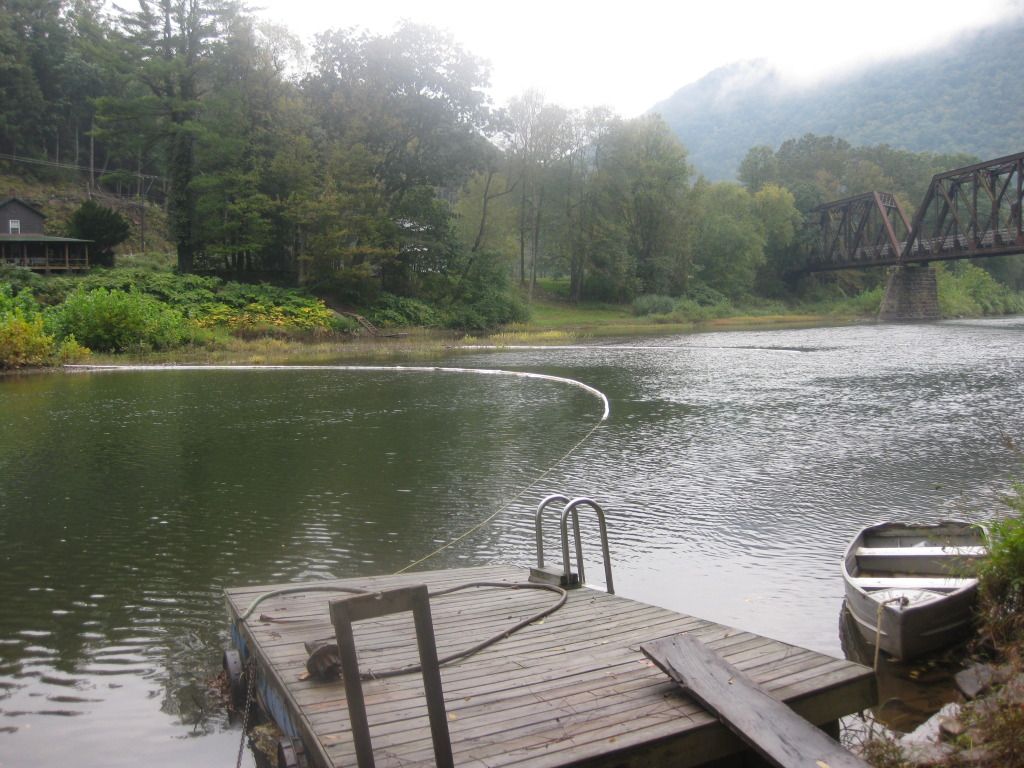Final Water Analysis
RDA asked Ted Stroder, former IBM environmental and chemical safety engineer, to weigh in on the data.
"I did see some levels of materials that could be a potential problem if you were to ingest them over an extended period of time, but that would only be possible if those levels were in your drinking water supply," said Stroder.
Pine Creek is a public drinking water source but Jersey Shore Water Authority only operates its Pine Creek intake during low flow periods. The intake was shut when the accident occurred.
"I don't see an immediate human health concern," said Stroder.
Understanding the spill's potential impact to aquatic life is more difficult.
"Determining aquatic toxicity would require modeling based on specific contaminants and their levels, water flow rates, water hardness, and pH," said Stroder. "This is expensive, time consuming, and rarely done."
 |
|
Vegetation growing along Pine Creek's bank.
Image: Garret Socling
|
"It is one thing to determine chemical contamination but another to make any sense out of how that contamination will affect the living organisms in a stream," said Ph.D. Fisheries Biologist Harvey Katz. "In the case of fish, crayfish and macroinvertebrates you could end up compromising the ability of the organism to successfully reproduce."
Changes in population size could have a cascade of effects on the ecosystem, said Katz.
"We're pretty sure that nothing happened to the creek," said Tom Randis, DEP Water Quality Program Manager. "Are you ever completely sure? No. But is it worth trying to determine? A survey takes a tremendous amount of time, effort, and staff-especially when we're 95% sure no damage was caused."
 |
|
A boom placed in the creek to help catch contamination.
|
DEP did not conduct a macrobenthic survey because they found no visual signs of a fish kill. According to Ph.D hydrologist and oil spill expert Michel Boufadel, a macrobenthic survey should have been conducted regardless.
"Fish usually swim away from the contaminated area," said Boufadel, who investigated the Exxon Valdez oil spill and BP's Deepwater Horizon blowout. "The macrobenthic creatures do not leave, that's the issue. For a spill at a stream's edge, the larvae and the fish eggs and the macrobenthic community will be impacted but not the fish."
"We're talking about a second-and-a-half's worth of flow getting into Pine Creek," said Randis. "Experience has shown many times that we just aren't going to catch a macrobenthic problem downstream.
 |
|
Residential property downstream from spill site.
Image: Garret Socling
|
When we do a macrobenthic survey it's stream bank to stream bank in the mixing zone. You take all those samples - and in a healthy community you're talking about hundreds and hundreds of bugs - and you put them in a community lot, fix them, and take sub-samples out of that entire composite. You're basically accounting for numbers and variety and comparing that against past benchmarks."
Boufadel suggests that DEP's sampling methodology could be the reason macrobenthic problems go undetected.
"When you have [4,620] gallons spilling in a [creek flowing at a rate of] 2,400 gallons per second, you assume it mixes across the section and you assume it will dilute," said Boufadel. "However, spills don't occur in the middle of the stream, they occur at the side of the stream. The pollution won't get to the middle of the stream to be mixed, it will keep moving along the banks of the stream and cause more and more damage."
.JPG) |
|
Stagnant area at the creek's edge. Image: Garret Socling
|
The collision sheared the valve off the Minuteman Environmental Services truck and emptied the entire payload into Pine Creek before emergency responders could arrive.
"Look closely at the upstream versus downstream data to see if there's any significant changes," said Randis. "There's not. Then again, that's predicated on the fact that everybody got there after the truck's contents emptied."